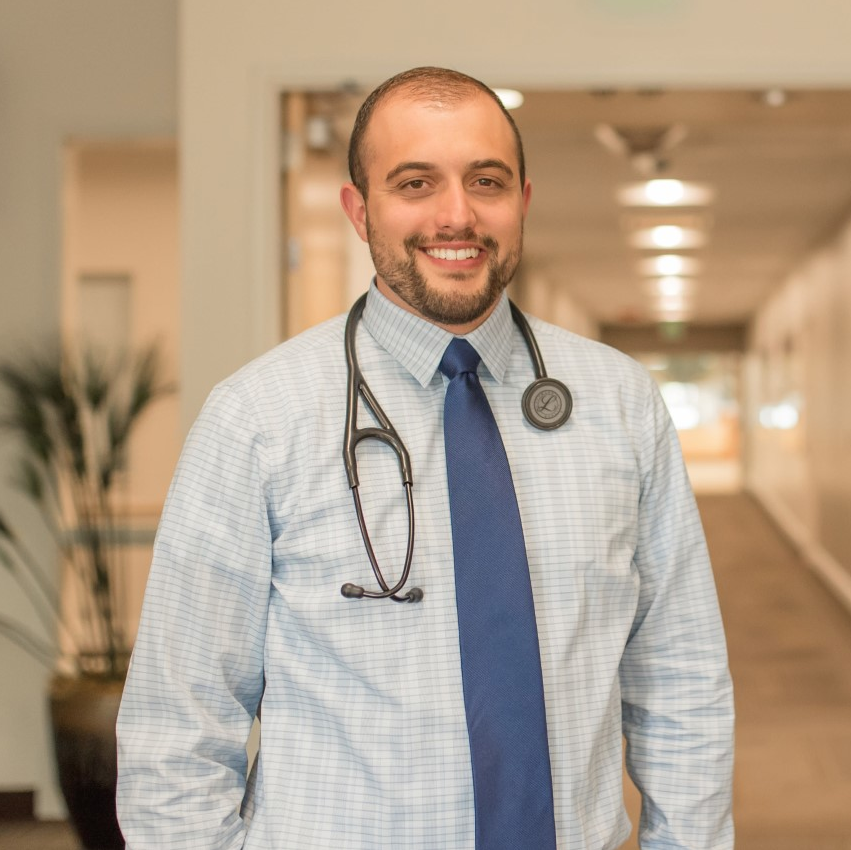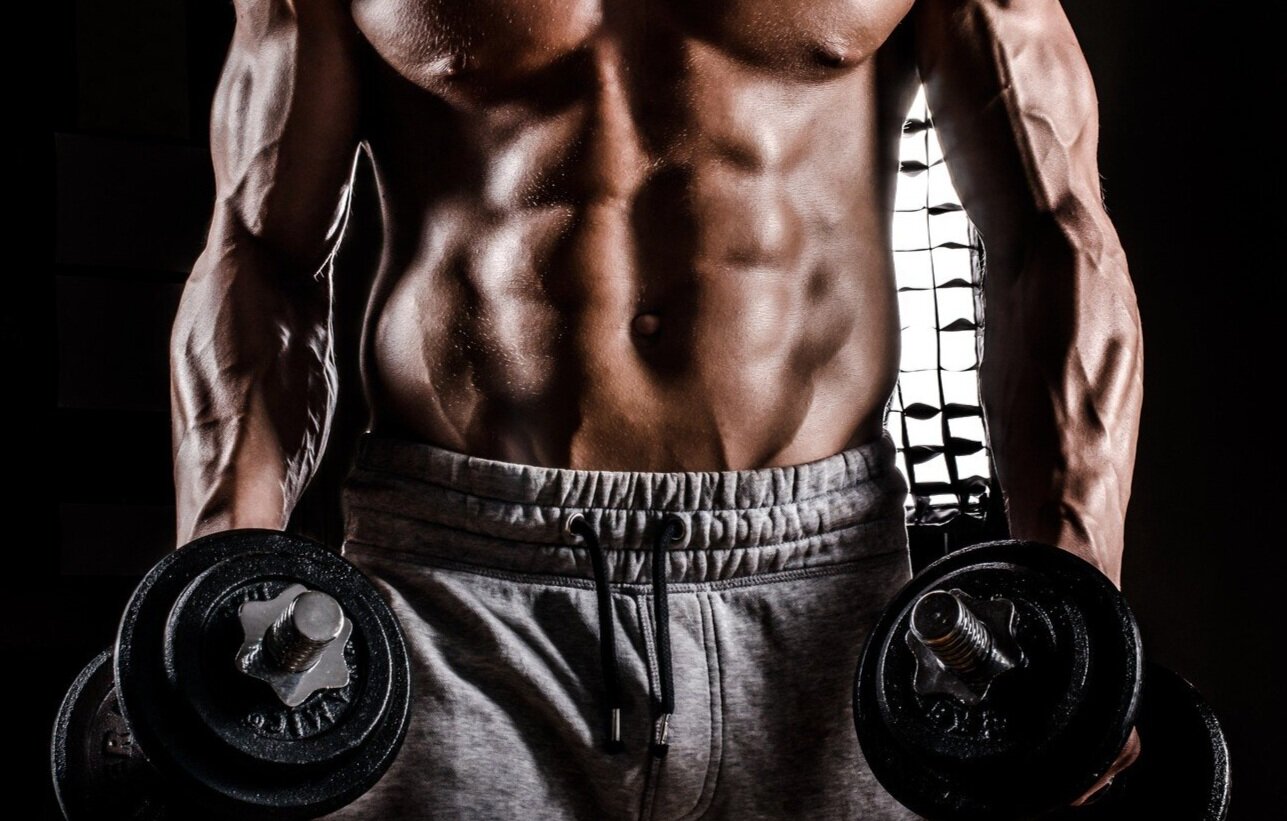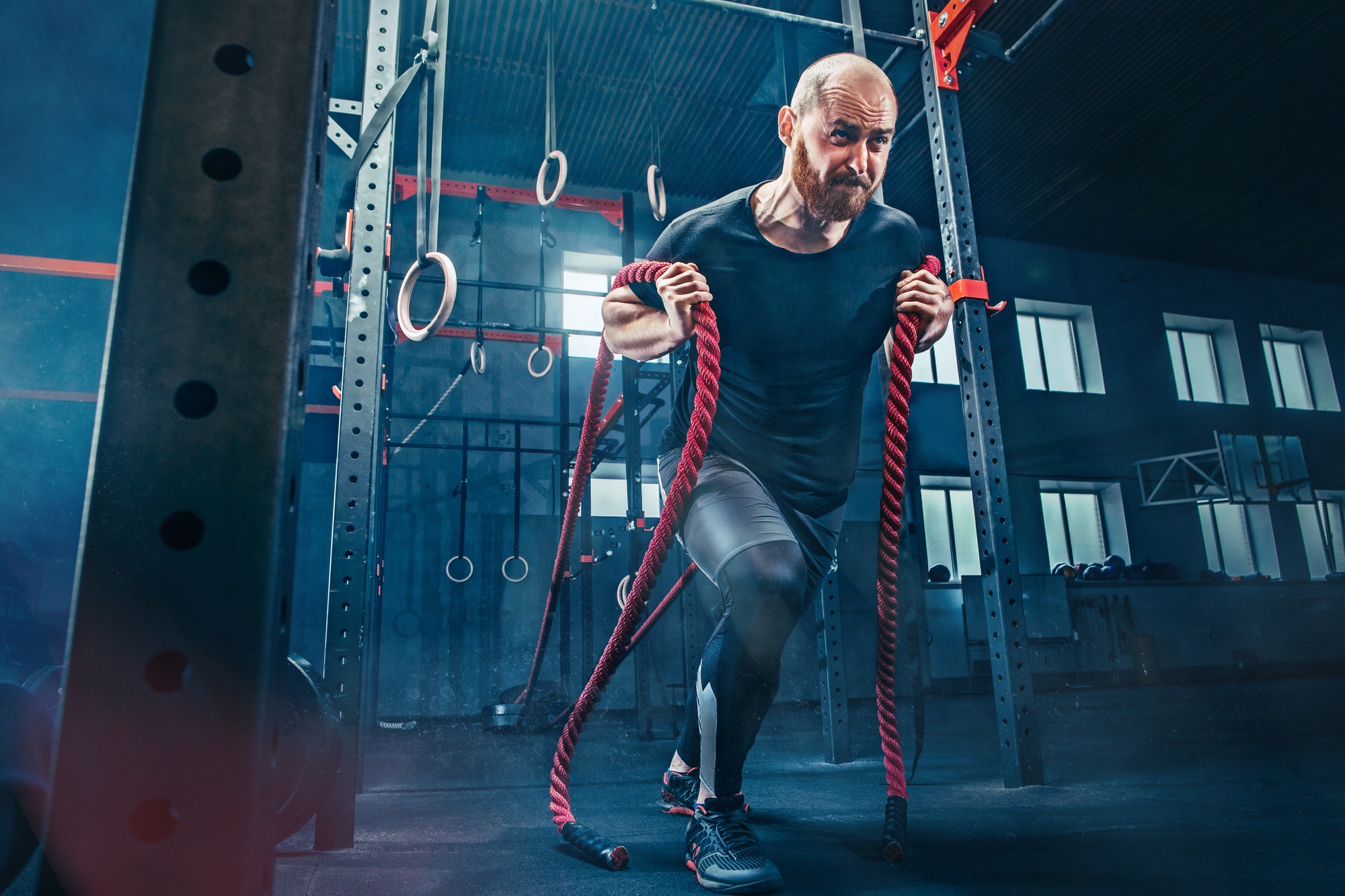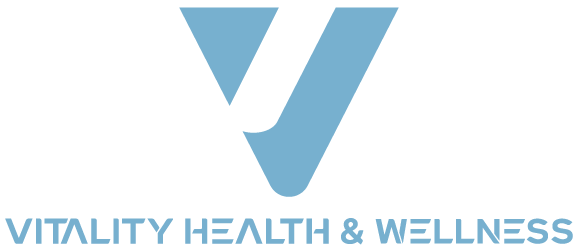FASTER.
STRONGER.
HARDER.
How It Works

1. SIGN UP ONLINE
Through our website and fill out all of the necessary information.
2. TALK TO A SPECIALIST
Share your contact information, and our support team will reach you on priority.
START YOUR PROGRAM
Once everything is good to go. All the medications and necessary supplies will be delivered to your doorstep.
Provider
Hello, and welcome to Vitality Health & Wellness.
My name is Dyllan Almond, MSN, APRN, NP-C. I’ve been in healthcare for over 10 years in various settings, the last two being spent practicing both hospitalist and emergency medicine. My practice has recently branched out and I have made health and wellness a priority for both men and women. A big part of that venture is studying and researching hormone therapy which can be an excellent tool to help restore your capacity to grow physically and mentally. My patients can attest that a well-balanced diet and exercise program, coupled with a unique medication regimen designed specifically for each individual patient, can get you back to a state of being strong and active, with more energy in all aspects of life. Let Vitality Health & Wellness improve your performance and assist you in accomplishing your goals!

Provider
Hello, and welcome to Vitality Health & Wellness.
My name is Dyllan Almond, MSN, APRN, NP-C. I’ve been in healthcare for over 10 years in various settings, the last two being spent practicing both hospitalist and emergency medicine. My practice has recently branched out and I have made health and wellness a priority for both men and women. A big part of that venture is studying and researching hormone therapy which can be an excellent tool to help restore your capacity to grow physically and mentally. My patients can attest that a well-balanced diet and exercise program, coupled with a unique medication regimen designed specifically for each individual patient, can get you back to a state of being strong and active, with more energy in all aspects of life. Let Vitality Health & Wellness improve your performance and assist you in accomplishing your goals!
TOP 4
Benefits of Testosterone Therapy


LEAN MUSCLE GROWTH AND SIZE
We transform the way you live with Optimal Hormones Levels. We offer a hormone replacement program specially curated to bring your strength, focus, endurance, sexual drive, and much more back. We help you be the best version of yourself.

BOOSTED PERFORMANCE & ENERGY
A massively increased energy reported within the first three months of TRT.

WEIGHT LOSS TREATMENT & WAIST REDUCTION
TRT also offers weight loss solutions, waist reduction, and reduced BMI in Males.

A BETTER FOCUS & FUNCTIONALITY
Patients with Low-T can improve their executive functionality and cognition through testosterone therapy.
FUEL YOUR
INNER
ATHLETE
10% of men after age 30 have Low T
How do I know if I have Low Testosterone.
As a man ages, his serum testosterone level will decline. In fact, after age 30, a man’s testosterone level can decrease 1% each year. Low Testosterone, also known as hypogonadism, testosterone deficiency, male climacteric or Low-T, is defined as having a serum testosterone level < 300 ng/dL and associated symptoms. Symptoms of Low-T include weight gain, daily fatigue, loss of muscle mass (sarcopenia), lack of energy or endurance to perform tasks, taking daily naps after work or meals, loss of sex drive and erectile dysfunction. Low-T can also be a risk for cardiovascular disease and prostate related issues. Advanced testosterone replacement therapy by the experts at REGENX Health can restore testosterone levels to supra-physiological levels, improve the symptoms of Low-T and improve a man’s quality of life.


24/7
Direct specialists access
Zero
Zero Wait Time
2 Day
2 Day Free Shipping *
ENERGY PERFORMANCE FOCUS
How will Testosterone Therapy make me feel.
- Enhance Energy & Endurance
- Improve Lean muscle Growth
- Promote weight loss & reduced waist size
- Improve prostate health & function
- Improve cholesterol (lipid profile)
- Reduce daily fatigue
- Enhance cardiac function
- Optimize focus and concentration
- Improve sex drive and erectile function

Testosterone Replacement is our Expertise
At Vitality we specialize in providing men expert testosterone replacement. Our Urologic specialists provide superior and proven results with attention towards meeting your expectations of therapy. Each patient receives personalized treatment, care and a tailored medication regimen to optimize performance & stamina.
#1 for TRT
Meeting your Expectations. Enhancing your Performance.


The Initial Visit
During your initial consultation with one of our Board Certified Specialists, we review the benefits and risks of all medications and treatment programs, confirm a diagnosis, discuss your medical history and how one of our programs can facilitate improvement of your symptoms. We ensure your understanding of the medications in question as well as the protocol we recommend and aim to meet your expectations of therapy. Our specialists will customize a program and regimen best suited towards your goals and expectations of therapy with your health as a priority. *Please note that not all patients are candidates for treatment. Certain medical conditions and even laboratory findings can prevent a patient from receiving treatment. Your provider will determine your candidacy for treatment and prioritize your health and well being.

Free Medication Shipping
All medication and necessary supplies are mailed to you fast and discreetly from an affiliated pharmacy. With direct access to your specialists 24/7, if you have any questions about the medication simply send us an email. We want to make sure you are comfortable using the medication and aim to make the entire process easy, affordable and convenient.

Specialists Support
At Vitality Health, we prioritize your health and performance. We cater to your schedule and make therapy convenient and professional. Every patient is provided with a contact email for our specialists for fast and direct communication.
TRT UPDATES
#1 Source for Low T news, research and advice.
Low-T FAQ
Commonly asked questions about testosterone therapy
How is low testosterone diagnosed and measured?
Diagnosing low testosterone typically includes two factors:
- Blood tests to measure testosterone levels (typically anything less than 300ng/dl)
- The presence of particular signs or symptoms
Testosterone is measured from blood samples. Blood samples taken in the early morning, before 11:00 AM, ensure the most specific and accurate results. Two common tests are used to measure testosterone levels in blood:
- Mass Spectrometry Liquid Chromatography is the gold standard method. This method isolates the steroid hormones in blood using chromatographic separation then a detection of massto-charge ratio. This testosterone measuring method is the most accurate and specific, so it can take about three (3) days to perform.
- Rapid automated immunoassay is the most commonly used method. This test is faster, typically taking one (1) day.
Additionally, surveys are sometimes used to assist in diagnosing low testosterone. The most popular and validated survey is the Androgen Deficiency in Aging Male (ADAM) questionnaire. The ADAM survey has widely been used a screening tool to detect men at risk for androgen deficiency (Low-T). The standard ADAM questionnaire consists of 10 yes-or-no questions that relate to symptoms of androgen deficiency. A man who responds positives to questions #1 or #7 or a total of 3 other questions typically has a positive Low-T diagnosis.
- Do you have a decrease in libido (sex drive)?
- Do you have lack of energy?
- Do you have a decrease in strength and/or endurance?
- Have you lost height?
- Have you noticed a decreased “enjoyment for life”?
- Are you sad and/or grumpy?
- Are your erections less strong?
- Have you noted a recent deterioration in your ability to play sports?
- Are you falling asleep after dinner?
- Has there been a recent deterioration in your work performance?
What are common symptoms of low testosterone?
Men experiencing hypogonadism (low testosterone) may experience the following symptoms, divided into physical, cognitive and sexual areas:
- Physical signs & symptoms:
- Reduced energy and endurance
- Diminished work performance
- Diminished physical performance
- Loss of body hair
- Reduced beard growth
- Fatigue
- Reduced lean muscle mass
- Weight gain and/or obesity
- Infertility
- Gynecomastia (breast enlargement)
- Cognitive signs & symptoms:
- Depressive symptoms
- Reduced motivation to complete tasks
- Poor concentration
- Forgetfulness
- Irritability personality
- Sexual signs & symptoms:
- Reduced sex drive and desire
- Erectile dysfunction (ED)
- Lack of morning erection
What are the benefits of testosterone therapy?
The primary treatment for hypogonadism is testosterone replacement therapy (TRT). Testosterone therapy can include the use of injections, gels, patches, or pellets, though injections and gels are most common.
Testosterone therapy can improve the symptoms of low testosterone, including the following:
- Correcting insulin resistance
- Increasing bone and muscle mass
- Decreasing subcutaneous fat
- Lowering lowdensity lipoprotein cholesterol, triglycerides, blood glucose, HbA1c, and blood pressure
- Increasing highdensity lipoprotein cholesterol
- Improving erectile function and life parameters (such as increased energy and friendliness, decreased anger and anxiety, etc.)
- Improve energy & performance
- Reduce daytime fatigue
This improvement in physiologic factors is itself enough to warrant therapy. However, patients cite the improvements in physical and mental symptoms as key to their satisfaction. One recent study evaluated the patient satisfaction of men treated with different formulations of testosterone therapy (52.5% injection, 30.6% gels, and 16.9% pellets), with overall satisfaction rates ranging from 62.8% with less than 6 months of therapy to higher than 79% at 25-36 months.
What treatment options are available for Low-T?
At Vitality, our board-certified urologic specialists will prescribe one of two treatments:
- Injectable testosterone formulation (testosterone cypionate or testosterone ethanoate)
- Testosterone topical gel
Both options are effective in increasing male testosterone levels. For members who desire a way to raise their testosterone levels without utilizing exogenous testosterone, our specialists can prescribe other medications and lifestyle changes that will raise testosterone levels in accordance with your expectations.
If you desire, testosterone pellets, please contact Vitality to learn more.
Will testosterone therapy cause my testicles to atrophy (shrink)?
Testicular atrophy can occur in some men who are undergoing testosterone replacement therapy. Testicular atrophy can result from a decrease in pituitary signaling of LH and FSH to the testicles to maintain spermatogenesis and intratesticular testosterone production. Administering HCG (human chorionic gonadotropin) during testosterone replacement may negate this effect, resulting in a maintenance in testicular size and a potential maintenance in spermatogenesis (sperm production) during testosterone replacement therapy.
Will testosterone replacement therapy improve my erectile dysfunction?
Testosterone plays a key role in the central and peripheral modulation of erectile physiology. Though testosterone replacement therapy is not a primary treatment for erectile dysfunction (ED), many hypogonadal men who receive testosterone therapy report improvement in their erectile function and their sexual activity.
Several clinical trials indicate that testosterone replacement therapy can improve erectile function in several ways:
- Enhancing nitric oxide synthase (NOS)
- Improving penile nerve functions
- Enhancing response to PDE5 inhibitors, particularly Viagra (Sildenafil), among others
- Improving venoocclusive erectile function
Clinical trials have shown that testosterone therapy can rapidly increase levels of testosterone and improve sexual function and mood in men with hypogonadism. Testosterone gel in combination with the PDE-5 inhibitor Viagra (Sildenafil) has been demonstrated to significantly improve erectile function and orgasmic function in patients with ED and hypogonadism who had previously not responded to sildenafil monotherapy. Therefore, testosterone therapy may be considered for the treatment of ED in men with low to low–normal total testosterone levels who have failed previous treatment with PDE-5 inhibitors.
Does testosterone replacement cause infertility?
Testosterone is a crucial hormone in the development of male reproductive organs and male fertility. Elevated levels of testosterone in the testicles secreted by Leydig cells are necessary for spermatogenesis (sperm production). The administration of exogenous testosterone results in suppression and shutdown of the hypothalamic pituitary-gonadal (HGP) axis. This results in a decrease in LH and FSH secretion and subsequent lack of signaling to Leydig Cells and Sertoli cells in the testicles to make testosterone and promote spermatogenesis.
Many clinicians and patients are unaware of the effects of testosterone on male fertility. A review of the current literature suggests that most cases of testosterone-induced male factor-induced oligospermia (low sperm concentration) or azoospermia (absence of motile sperm) will likely resolve within 4-12 months after cessation of exogenous testosterone administration. Factors that can hinder the return of sperm production include age and duration of testosterone usage.
What is Testosterone?
Testosterone is a hormone that is primarily produced in men in the testicles. Healthy levels of testosterone contribute to the maintenance of male bone density and fat distribution, red blood cell production, facial and body hair, libido (sex drive), and sperm production.
Endogenous androgens, including testosterone, are responsible for normal growth and development of the male sex organs as well as for the maintenance of secondary sex characteristics.
Androgens have several physiological effects on the body, including:
- Retention of nitrogen, sodium, potassium, and phosphorous
- Decreased urinary excretion of calcium
- Increased protein anabolism
- Decreased protein catabolism
- Improved nitrogen balance (only when the intake of calories and protein is sufficient)
Androgens are responsible for the growth spurt of adolescence and for eventual termination of linear growth, brought about by fusion of the epiphyseal growth centers. In children, exogenous androgens accelerate linear growth rates, but may cause disproportionate advancement in bone maturation.
The physiological effects of androgens can result in a variety of development and changes in men over time, including:
- Growth and maturation of the prostate, seminal vesicles, penis, and scrotum
- Development of male hair distribution, such as beard, pubic, chest, and axillary hair
- Laryngeal enlargement
- Vocal cord thickening
- Alterations in body musculature and fat distribution
Androgen use over long periods may result in fusion of the epiphyseal growth centers and termination of the growth process. Androgens have been reported to stimulate production of red blood cells by enhancing production of erythropoietic stimulation factor (EPO).
During exogenous (external or intentional) administration of androgens, endogenous (internal or naturally occurring) testosterone release is inhibited due to the decrease of pituitary luteinizing hormone (LH). Men taking large doses of exogenous androgens may also experience a suppression or cessation of spermatogenesis due to the decrease in the pituitary follicle stimulating hormone (FSH).
Why is testosterone used?
As men age, testosterone levels tend slowly decline approximately one percent per year after the age of 30. The decline in testosterone levels can have a negative impact on several physiological factors. Your specialists will help you determine whether your low testosterone levels are due to the normal aging process or to a specific condition.
What is hypogonadism?
Hypogonadism is a condition in which the male body is no longer able to produce normal levels of testosterone. Typically, this is due to a lack of testosterone production by the testicles or lack of signaling from the pituitary gland to the testicles to make testosterone.
Before any man undergoes testosterone replacement therapy (TRT), it is imperative first to ascertain the cause of low testosterone, and only then to treat a low testosterone level. A good specialists who is an expert in TRT will not only your replace testosterone levels, but investigate why your levels are low.
What’s the difference between Low-T, low testosterone, androgen deficiency, andropause & hypogonadism?
Low testosterone, Low-T, androgen deficiency, hypogonadism, and andropause are all terms that refer to having a low testosterone level.
Medical terminology that refers to low testosterone primarily uses the terms “hypogonadism” or “androgen deficiency”. Less formal terms like “Low-T” and “andropause” have been adopted both to normalize the condition and to market treatments for the condition.
What causes Low-T?
Male hypogonadism is caused by a variety of conditions. These conditions also determine whether a man has primary or secondary hypogonadism.
- Primary hypogonadism is the result of a lack of testosterone production by the testicle. It is most often associated with an increase in FSH/LH secretion by the pituitary.
- Secondary hypogonadism is a result of a lack of signaling from the pituitary to the testicle. It is associated with a decrease in FSH/LH and low testosterone levels.
First, your specialists should determine the cause of low testosterone before designing and beginning therapy. Common causes of low testosterone in men include:
- Primary hypogonadism (also known as hypergonadotropic hypogonadism and primary testicular failure):
- Klinefelter Syndrome
- Noonan Syndrome
- Absent testes
- Poorly functioning testes
- Secondary hypogonadism aka hypogonadotropic hypogonadism and secondary testicular failure):
- High prolactin level
- Iron overload
- Medications
- Pituitary damage or tumor
- Kalman’s Syndrome
- Prader Willi Syndrome
What testosterone value is considered low?
Consensus on low testosterone values varies across different medical treatment guidelines. In addition, many labs have different testosterone threshold that determine a low value. It is
important to have your testosterone value reviewed by a board-certified urologic specialists to most accurately diagnose and understand your testosterone value and if treatment is indicated. Most often, the decision to treat for low testosterone is at the discretion of your specialists.
In accordance with many clinical trial reports, most specialists use a testosterone cut-off of anything below 250-300ng/dl.
- According to the American Urologic Association (AUA), a total testosterone value below 300ng/dl is considered a reasonable value for which to diagnose low testosterone.
- The Endocrine Clinical Practice Guideline recommends diagnosing hypogonadism in men with symptoms and signs of testosterone deficiency as well as unequivocally and consistently low serum total testosterone and/or free testosterone concentrations (when indicated).
While some clinical guidelines such as the AUA provide a succinct number at which to diagnose hypogonadism, the Endocrine Society does not. Because testosterone levels vary throughout the day, your health provider will discuss the importance of drawing blood levels before 11:00AM when measuring testosterone. Visit with a Vitality provider today to get a better understanding of your testosterone level and whether you’re a candidate for therapy.
What medications can improve my testosterone levels without causing infertility?
Men can utilize a variety of medication options as well as lifestyle changes in order to raise testosterone levels without administering exogenous testosterone directly.
Medications that can raise testosterone indirectly include:
- Human Chorionic Gonadotropin (HCG)
- Clomiphene Citrate (Clomid)
- Anastrozole (Arimidex)
Men can utilize a variety of medication options as well as lifestyle changes in order to raise testosterone levels without administering exogenous testosterone directly.
Medications that can raise testosterone indirectly include:
- Human Chorionic Gonadotropin (HCG)
- Clomiphene Citrate (Clomid)
- Anastrozole (Arimidex)
Is estrogen management important during testosterone therapy?
Estrogens in humans are found in several forms: estrone (E1), estradiol (E2) and estriol (E3). Of these, estradiol (E2) has the highest affinity for the estrogen receptors and is most biologically active. Estradiol is produced in men by the aromatization of testosterone in fat cells predominately and to a lesser extent in the adrenal glands and testicles.
Men on testosterone therapy can often find an increase in estradiol levels. Elevated estradiol levels in men on testosterone therapy can lead to decreased libido, breast tenderness and growth (gynecomastia).
The use of anastrozole in men on testosterone therapy is considered off-label, but can be used during testosterone replacement therapy to optimize results and reduce elevated estradiol levels that may result. Studies have shown improved libido in men on testosterone therapy combined with an aromatase inhibitor over testosterone alone.
Can I increase my testosterone naturally?
It is possible to increase a man’s testosterone naturally by improving your daily routine. First, look at the root cause of low testosterone in a man, which may include poor diet, weight gain, lack of sleep, or stress. (Stress linked to multiple jobs, many work-related deadlines, and long daily commutes contribute to low testosterone levels.) Improving these four factors in your daily routine will likely improve your testosterone levels.
- Studies indicate that a loss of more than 10% of a male body’s weight can improve testosterone levels significantly, up to 85ng/dl. A 15% weight loss can increase testosterone levels up to 180ng/dl.
- Other studies show that sleep restriction (lack of sleep) can decrease testosterone levels by as much at 15%. Quality, restful sleep between the hours of 4:00 – 8:00 AM have the highest correlation to improve testosterone levels.
Other factors contribute to low testosterone levels including hypertension (high blood pressure), tobacco use, and sleep apnea.
Is estrogen management important during testosterone therapy?
Estrogens in humans are found in several forms: estrone (E1), estradiol (E2) and estriol (E3). Of these, estradiol (E2) has the highest affinity for the estrogen receptors and is most biologically active. Estradiol is produced in men by the aromatization of testosterone in fat cells predominately and to a lesser extent in the adrenal glands and testicles.
Men on testosterone therapy can often find an increase in estradiol levels. Elevated estradiol levels in men on testosterone therapy can lead to decreased libido, breast tenderness and growth (gynecomastia).
The use of anastrozole in men on testosterone therapy is considered off-label, but can be used during testosterone replacement therapy to optimize results and reduce elevated estradiol levels that may result. Studies have shown improved libido in men on testosterone therapy combined with an aromatase inhibitor over testosterone alone.
